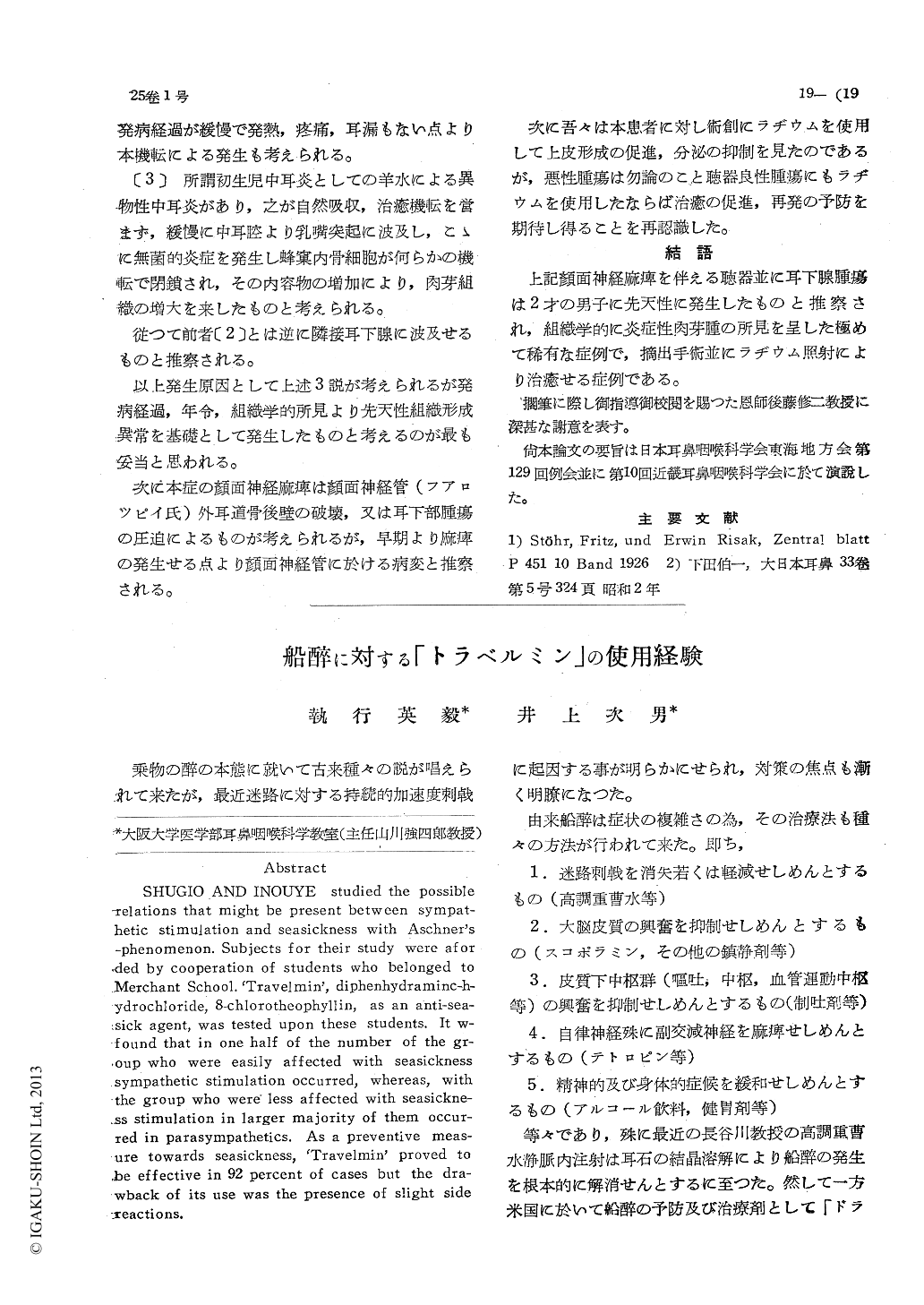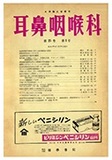- 有料閲覧
- 文献概要
- 1ページ目
乗物の醉の本態に就いて古来種々の説が唱えられて来たが,最近迷路に対する持続的加速度刺戟に起因する事が明らかにせられ,対策の焦点も漸く明瞭になつた。
由来船醉は症状の複雑さの為,その治療法も種々の方法が行われて来た。即ち,1.迷路刺戟を消失若くは軽減せしめんとするもの(高調重曹水等)
SHUGIO AND INOUYE studied the possible relations that might be present between sympathetic stimulation and seasickness with Aschner's phenomenon. Subjects for their study were afox ded by cooperation of students who belonged to Merchant School. 'Travelmin', diphenhydraminc-hydrochloride, 8-chlorotheophyllin, as an anti-seasick agent, was tested upon these students. It w-found that in one half of the number of the group who were easily affected with seasickness sympathetic stimulation occurred, whereas, with the group who were less affected with seasickness stimulation in larger majority of them occurred in parasympathetics. As a preventive measure towards seasickness, `Travelmin' proved to be effective in 92 percent of cases but the drawback of its use was the presence of slight side reactions.

Copyright © 1953, Igaku-Shoin Ltd. All rights reserved.


